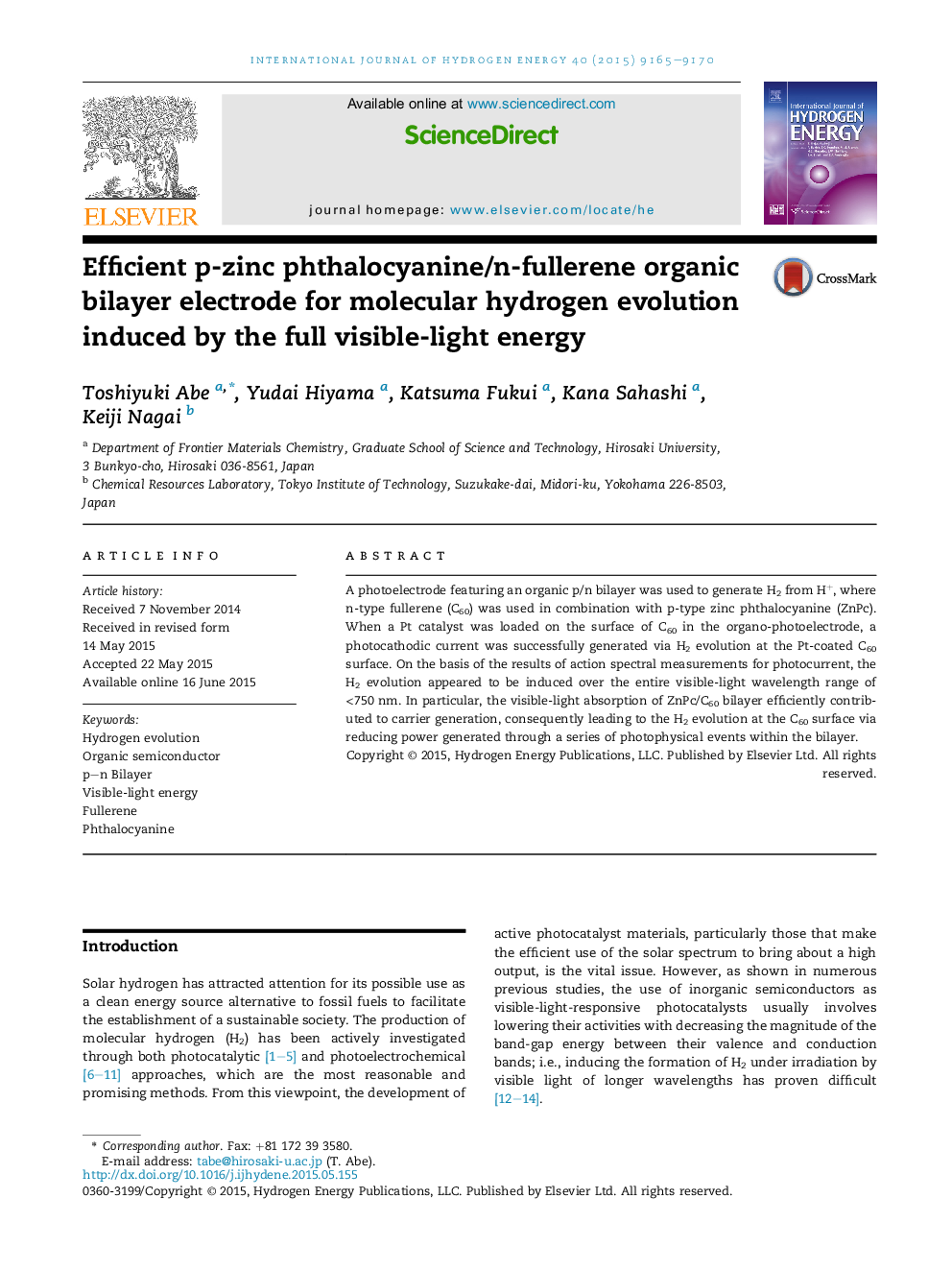| Article ID | Journal | Published Year | Pages | File Type |
|---|---|---|---|---|
| 7715097 | International Journal of Hydrogen Energy | 2015 | 6 Pages |
Abstract
A photoelectrode featuring an organic p/n bilayer was used to generate H2 from H+, where n-type fullerene (C60) was used in combination with p-type zinc phthalocyanine (ZnPc). When a Pt catalyst was loaded on the surface of C60 in the organo-photoelectrode, a photocathodic current was successfully generated via H2 evolution at the Pt-coated C60 surface. On the basis of the results of action spectral measurements for photocurrent, the H2 evolution appeared to be induced over the entire visible-light wavelength range of <750Â nm. In particular, the visible-light absorption of ZnPc/C60 bilayer efficiently contributed to carrier generation, consequently leading to the H2 evolution at the C60 surface via reducing power generated through a series of photophysical events within the bilayer.
Related Topics
Physical Sciences and Engineering
Chemistry
Electrochemistry
Authors
Toshiyuki Abe, Yudai Hiyama, Katsuma Fukui, Kana Sahashi, Keiji Nagai,
